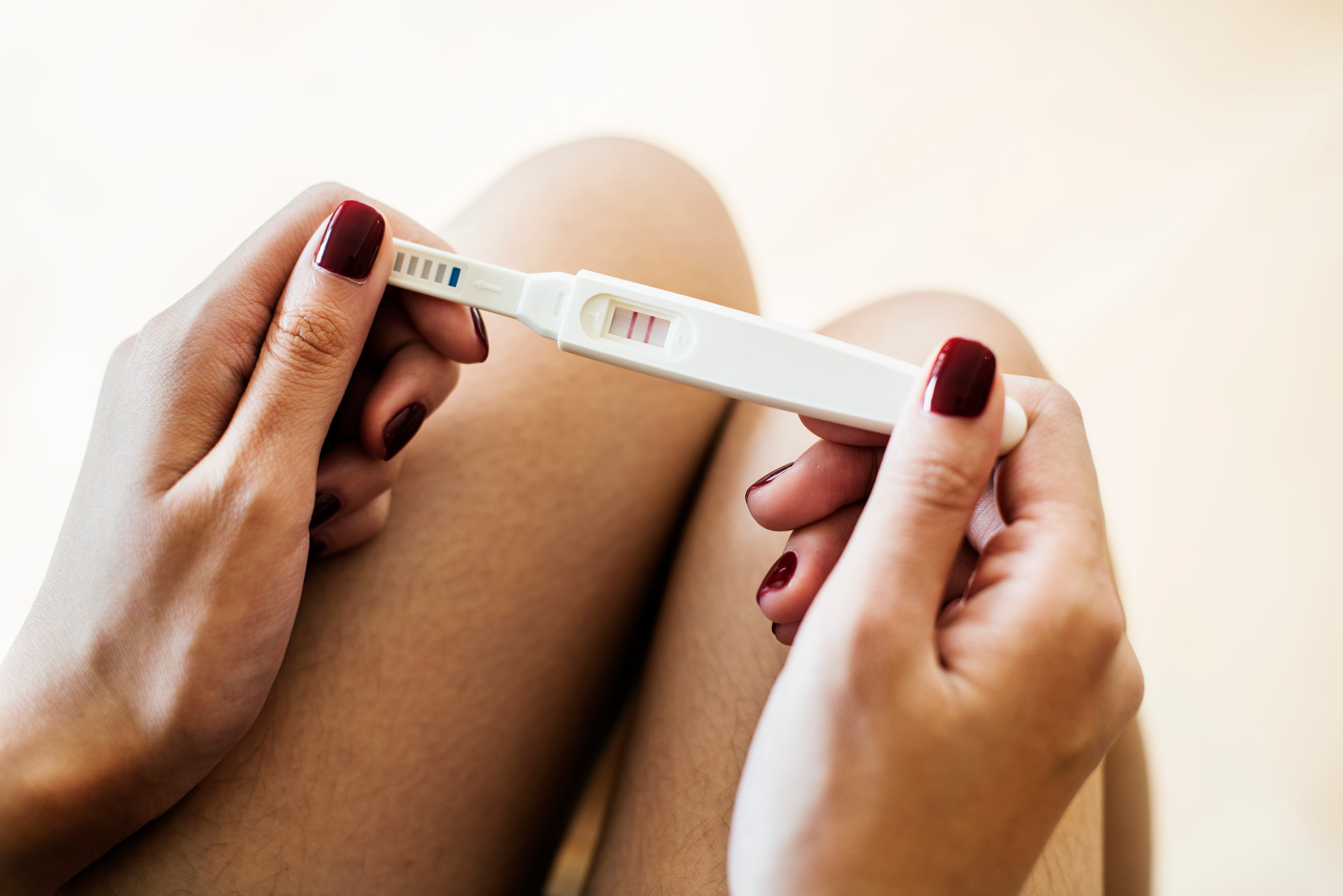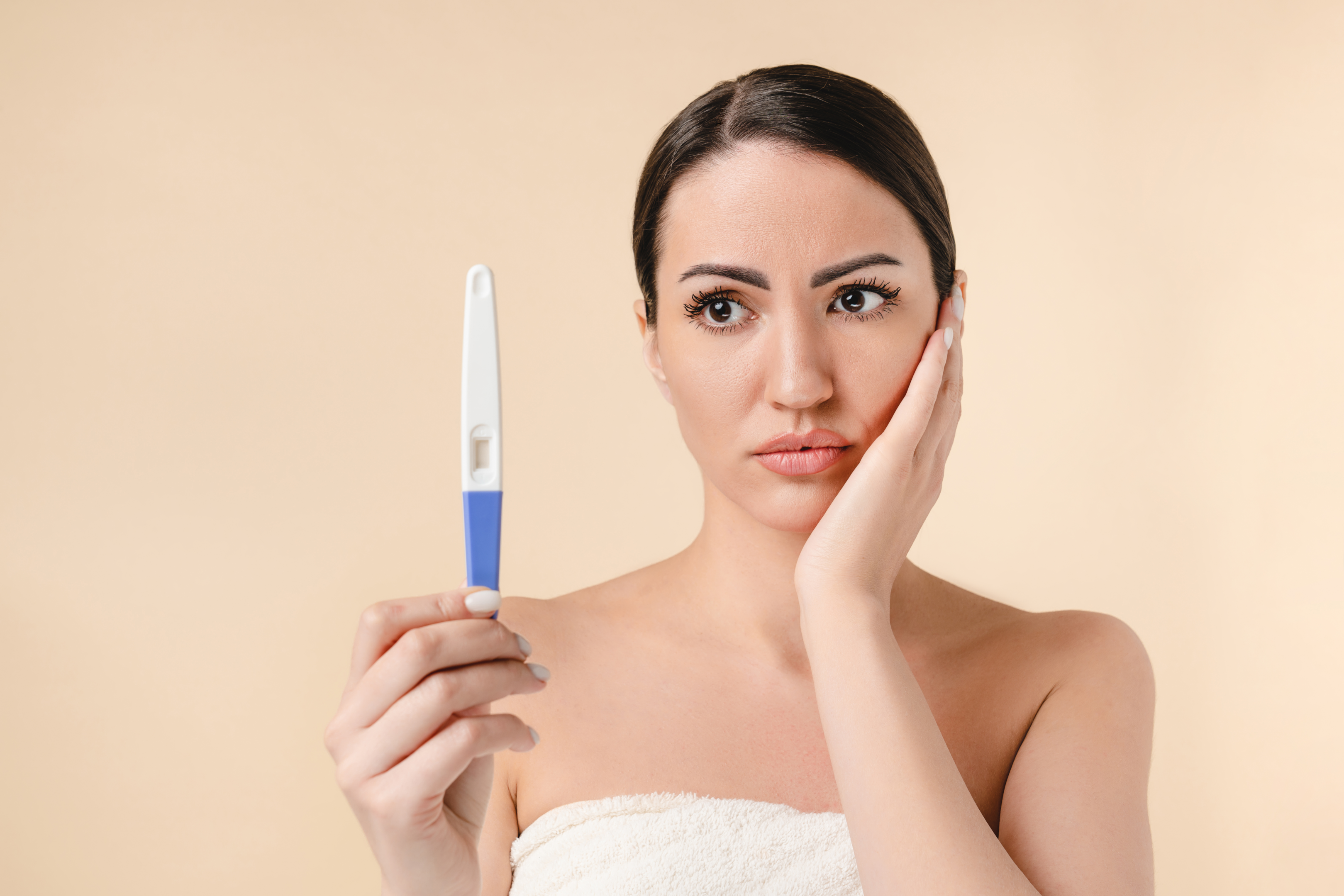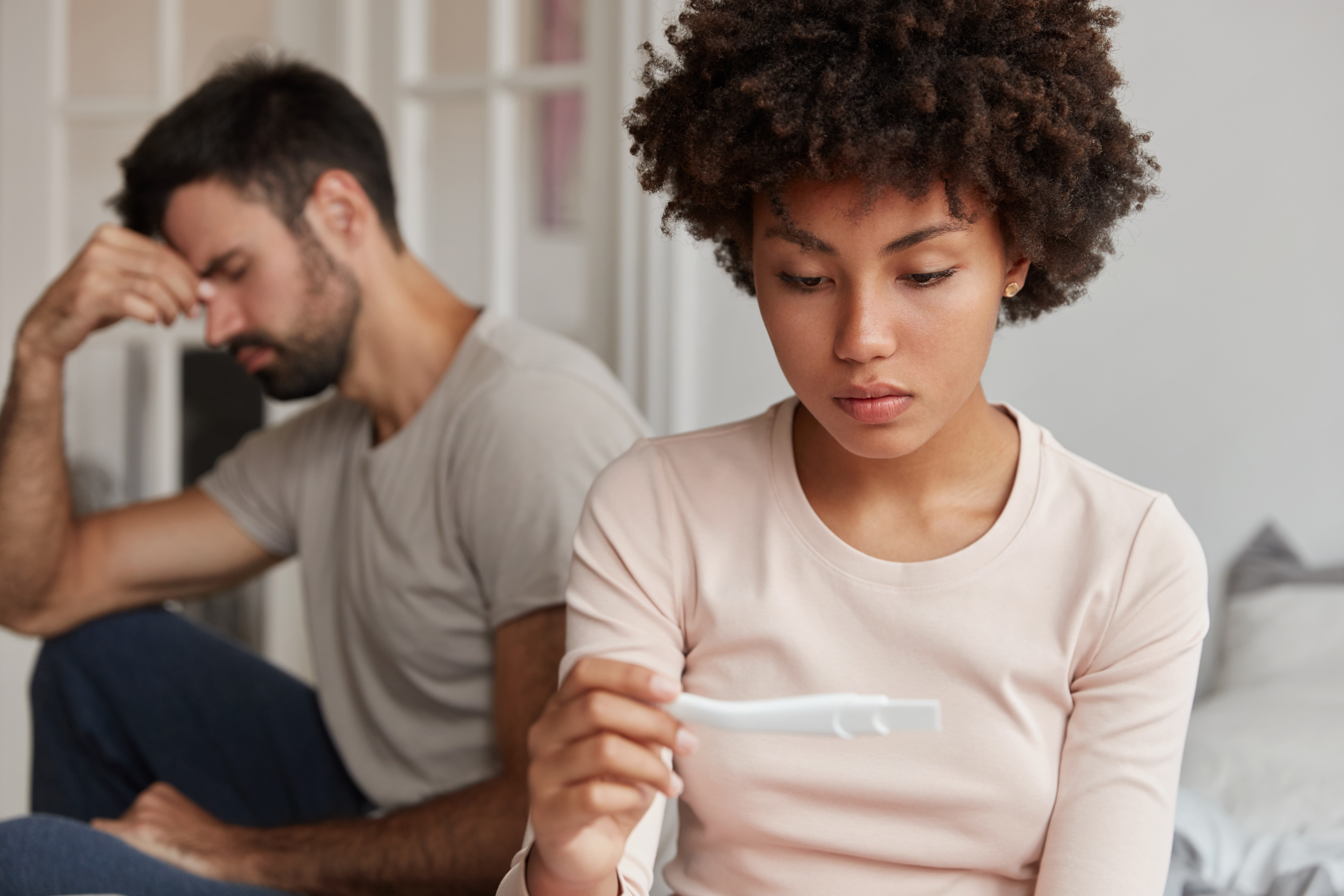Everything you need to know about a pregnancy test
.png?v=1670337308381)

Related products
What’s covered?
Pregnancy is mostly detected by a blood test that detects the human chorionic gonadotropin (hCG) in the blood.

You have missed periods, and your instincts say you are expecting. Now, what to do? Usually, people look to confirm the results through a home pregnancy test. Most pregnancy tests are qualitative tests that detect some hormones in pregnant women.
These tests provide more than 95% accuracy despite having some issues. The sensitivity and specificity of most pregnancy tests currently used are nearly 99% to detect the hCG level of 20-50 IU/mL or more. The results of the tests are interpreted through the appearance of lines. What are these lines? How do they appear?
A pregnancy is, however, a complex process and involves various other hormones. Our female hormone, blood test kit allows you to monitor the levels of these hormones. Click here to place your order.
What are the lines in pregnancy tests?
Have you any experience with the ''strips of hope''? These strips help you know if you are pregnant or not. A pregnancy test strip is a peace of nitrocellulose paper which is specially treated with antibodies against the hormones that it is designed to detect.
The test reagent (antibodies) present in these strips (which are coated in the form of bands) react with the hormones in the blood to produce lines. Most pregnancy tests involve two lines
-
A test line which measures the reaction of antibodies with the hormones.
-
A control line reflects that the sample has been used.
Only the appearance of the test line shows you have pregnancy hormones in your blood.

Commonly, the appearance of two lines means the test is positive. However, it is not always true. Sometimes, the formation of an evaporation line can confuse you. What is the evaporation line? To understand the evaporation line, you should first know how the pregnancy test works.
How does a pregnancy test work?
Your body releases a hormone called human chorionic gonadotropin (hCG) as the fertilized egg attaches to the uterine wall. Home pregnancy tests are designed to detect this hormone in the blood. The typical procedure is to urinate on a test stick and note the results sometimes later. The appearance of only one line (control) means you are not pregnant. The appearance of both the test and the control line is an indication of pregnancy.
However, sometimes an evaporation line can appear.
What is the evaporation line?
Evaporation is the conversion of a liquid into vapours. The water on a hot day evaporates without leaving a trace. What about urine? Your urine is not just water. It has several waste materials secreted by the body (e.g., uric acid, salts etc.), which leave a mark on the paper after the urine is allowed to air dry, leaving an evaporation line.
Normally, it is a colourless and faint line; however, sometimes, it can be strong and prominent. Some women may take this line as a test line and face disappointment later as the doctor rules out pregnancy in the clinic. To avoid frustration, you need to know if the second line is the pregnancy line or the evaporation line.
How you can identify the evaporation line in a pregnancy test?
An evaporation line is not expected every time; not all women will experience it, as it depends upon the urine composition. The composition of urine changes continuously, so the appearance of this line is also likely to change every time. This line is however different from the test or control line.
A faint and colourless mark is likely an evaporation line if;
-
The line is colourless without any dye in it.
-
It is like a water spot.
-
You are checking the results after more than ten minutes.
How can you prevent the evaporation line?
It is a product of urine composition. While you can't change the chemical composition of your urine, you need to follow the instructions of the manufacturer to lower the risk of having an evaporation line. You must read the results only within the reaction time recommended in the instruction manual. A careful test procedure will ensure that you don't get the line. You can avoid the line by following these instructions.
-
Check the results within the recommended time.
-
Don't use a test kit after its expiry date.
-
Don't store the test strips in very hot or cold places.
-
Don't urinate directly on the strip. Instead, urinate in a cup and dip the strip in it. It will prevent urine splashing on the strips.
-
A faint positive line can also occur if you take the test too early. Another test 2 weeks later will decrease the risk of evaporation line.
If you are still unsure despite all precautions, visit the nearest clinic for guidance and confirmation of pregnancy.

We have Well Women Blood Test kit that allows you to identify the levels of various biomarkers in your blood. Click here to know more about the kit and place your order.
A negative test could mean either you are not pregnant or you have performed the test too early when the levels of hormones are not yet identifiable. But do you know there is another cause of negative results, the 'twin pregnancy'. How can it be? Twins or triplets in your womb will result in too high levels of hCG to be detected by the test strips.
Can twins cause false negative results?
The home pregnancy tests detect hCG levels; the hormone secreted as the foetus is attached to the womb. Its levels are very small initially and grow gradually as the pregnancy advances. After 6-12 days of conception, the levels of hCG experience an exponential increase until a peak is reached toward the end of the first trimester (around the 10th week of pregnancy).
The strips have antibodies coated on them that react with the hCG, and you will see positive results in the form of two lines on the strips. There is, however, a slim chance that there is a negative result even if you are pregnant. It is called the false negative result. The other alternative is the false positive result, in which case the test is positive in the absence of pregnancy. Both these are common with home-based tests.

Twin pregnancy and levels of hCG
Studies have shown that having twins or triplets cause higher production and levels of hCG than having a single baby. What will happen? You should expect higher hCG levels to increase the chances of a positive result. However, you should also know of a phenomenon called the high-dose hook effect, which can result in a negative test even when you are pregnant. How? In simplest words, it is the phenomenon in which the antibodies present on the strip are overwhelmed with the high levels of hCG current in the blood.
For more simple explanation, imagine a situation where too many people attempt to pass through a narrow door. The result will be that no one gets the chance to pass through for some time. So, you can get a negative result. The experts have recommended using diluted urine for a second test if the first test is negative. It will minimize the risk of a false negative result.
Other causes of a false negative test
However, there are some other causes of false negative results, e.g.,
-
Using a too much-diluted urine
-
Testing the urine too earlier
-
Faulty test procedure etc.
For better results, you should wait until one missed period before taking the pregnancy test. For more accuracy, you need to combine a positive test result with some more signs of pregnancy, don't drink too much water before the test and use appropriate kits.
How can you diagnose twin pregnancies?
In case of twin pregnancies, ask your doctor to test your blood hCG levels, and look for other signs of pregnancy, e.g., missed periods, increased urination, nausea and vomiting, swollen, painful and tender breasts, fatigue etc., to diagnose the pregnancy in case the blood tests have failed. An ultrasound can also tell if you have twins inside your womb.
What does a faint line on a pregnancy test mean?

You will have only the control line if you are negative, but in the case of pregnancy, there will be another line called the test line. This very presence of this line, no matter how faint it is means you are positive for pregnancy. But what causes your pregnancy line to become faint?
Why is my line faint?
A faint line could be due to these factors;
-
The strength of the line depends upon the hCG levels in the urine. A faint line means you have low levels of hCG in your blood. The level of this hormone increases as the pregnancy advances. However, modern strips can detect the pregnancy as early as the 6th day of conception when the level of hCG in urine is too small. As pregnancy advances, the levels of hCG rise and a second test some days later will give better results.
-
Another reason that can cause a faint line is when you drink too much water before using the test strip. Your urine will be diluted, and the amount of hCG per unit volume will be less. So, drinking more water to cause early urination may be counterproductive.
However, the faint line doesn't mean a false positive test.
What does the faint line look like?
The colour of the line depends upon the dye used in the strips. For example, some strips use a blue dye, while others use red. In the case of red-dyed stripes, the faint line will look like a dim light pink line, while in the case of blue-dyed strips, the line will be like a light blue strip which is barely visible.

How you can avoid the faint line?
The appearance of a faint line can cause confusion in the interpretation of results. However, there are some tips which can help you to avoid these lines.
-
Don't drink excessive water before the test, as it can dilute the urine, lowering its hCG levels.
-
Perform the test early in the morning. Some studies have found that hCG levels are higher in the morning. It is because urine is fresh and is not diluted by the fluids you will take throughout the day. So, carrying out the test earlier can minimize the risk of a faint line.
-
Strictly follow the instructions of the manufacturers for the test procedure. It is very important as the materials used in the strips will have a different sensitivity for the hCG. Moreover, the time to read the results will differ for other strips. If you read the results too early for less sensitive strips, the result will be a faint line.
-
Use digital pregnancy testing kits as they don't require you to observe the line. They will tell you whether you are 'pregnant' or 'not pregnant'.
How soon after unprotected sex can I test for pregnancy?
If your contraception method has failed (e.g., the rupture of male condoms), or you have unprotected sex, you may want to know as early as possible if you are pregnant or not.

Before planning further, a home pregnancy test is a good option. If you are too eager to wait, we have a pregnancy test kit for you. It detects the hormone hCG levels in the blood and detects the pregnancy as early as 12-15 days after ovulation for women with a regular 28-day cycle. Click here to place your order.
When should I go for a pregnancy test for better results?
Most home pregnancy tests detect the level of human chorionic gonadotropin (hCG) secreted from the placenta as soon as the baby is conceived. However, its levels rise gradually with time. So, the earlier test will have more chances of false negative results.
A test of fewer than 2 weeks of unprotected sex or of one missed period can give inaccurate results. It is particularly true for women who have bleeding or spotting in early pregnancy, take it as periods and have a negative test result simultaneously. When such women notice the first signs of pregnancy, it has already advanced too far. So, two common recommendations are;
Testing after two weeks of unprotected sex
The traditional 'two-week' rule suggests performing a pregnancy test after two weeks of unprotected sex. This test will give accurate results for women with a regular 28-day cycle who ovulate regularly at regular intervals.

However, the cycles of most women are not so regular. Similarly, the cycles of women taking certain drugs, e.g., some antibiotics and contraceptives, are also not so predictable and they also do not ovulate regularly. Similarly, stress can also change ovulation and cyclicity. In these situations, this 2-week rule can give inaccurate results.
Testing after one missed period
The best time to detect pregnancy is the day when you expect your period according to your regular schedule. In case of inconclusive results, repeat the test the next day. Alternatively, you can carry out the test in the morning when the level of hCG is higher.
Keep in mind that the level of hCG doubles after every 48 hours in early pregnancy. So, you can repeat the test if unsatisfied with the results and still expect the pregnancy.
How to confirm the pregnancy?
A positive pregnancy test indicates pregnancy. If you need further confirmation, you need to visit the nearest reproductive health clinic. The doctor will perform clinical tests, e.g., ultrasonically, to confirm the pregnancy. Our health experts are also available for your guidance. Click here for online consultation and appointment.
What do negative pregnancy test results look like?
If you have unprotected sex or missed one period, you might think you are pregnant. You decided to go for a pregnancy test. But, surprisingly, the test result is negative. You may feel it difficult to trust the results as the test can also give false negative effects. It means you are pregnant, but the test shows you are not.
Similarly, you can miss periods without being pregnant. So, what does a negative pregnancy test result mean?
Why did you get a negative test result?
The following situations will result in a negative test.
-
A negative test result would mean you are either pregnant or not pregnant. It will detect the level of hCG in the blood. If the level of this hormone has not reached the minimum detectable level, you will have a negative result despite being pregnant.
-
If you are performing the test before the next expected periods, you can also get a negative result if;
-
The test strips used were not sensitive enough for early detection.
-
The hCG concentration in the urine was lower, or you have not used the first-morning urine for the test.
-
Your urine is diluted due to the excessive intake of water.

Sometimes, the test is negative, but you don't have the periods. What could be the cause? Some illnesses or stress can also cause a delay in the periods.
Can I miss the periods despite having no pregnancy?
Yes, it is possible in some situations, e.g.,
-
You are ill
-
You are breastfeeding
-
You have polycystic ovarian syndrome (PCOS)
-
You are travelling
-
You have poor sleep
-
You are under heavy stress
-
You menopausal or postmenopausal
Can I have a negative pregnancy test despite being pregnant?
Yes, it is also possible to have false negative results. An incorrect negative result could be due to the following reasons;
-
The test was conducted too early when the level of hCG is not yet detectable
-
The test kit used has expired
-
You are using the wrong protocol
-
You have an ectopic pregnancy.
Bottom-line
Many home pregnancy tests are available. These test strips allow you to take a pregnancy test easily by detecting the levels of hCG hormone in the blood. These pregnancy tests work well under ordinary conditions. However, some issues can arise, e.g., false negative and false positive pregnancy tests, evaporation lines etc.

We have a lot more information available for you about pregnancy, menopause and contraception. Click here to view our information pages.
We also have various sexual health products, e.g., birth control pills, hormone replacements, contraceptives etc. which you can purchase after consultation.




































 Rated Excellent by 26,523+ Reviews
Rated Excellent by 26,523+ Reviews